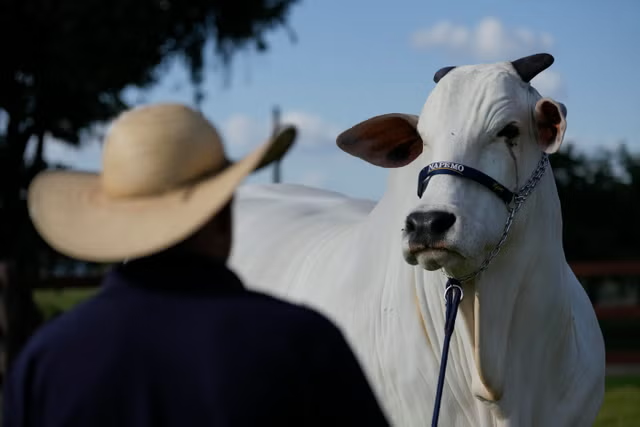Domestication and breeding by humans has affected dogs' abilities to use facial expressions to convey their emotions, a study has found.
Researchers at Durham University discovered that modern dogs are not as adept at distinguishing between friendliness and fear as their wolf ancestors were.
This is in part because breeding practices have emphasized features like excessive wrinkling, floppy ears and shorter muzzles, which can limit their ability to produce facial expressions for a wide range of emotions and affective states.
For the study, published in Nature's Scientific Reports, the researchers analyzed video clips of captive wolves and domestic dogs, to see how they reacted to certain situations, as well as how they appeared to communicate during social interactions.
The team identified nine distinct affective states, including anger, anxiety, curiosity, fear, friendliness, happiness, interest, joy and surprise. They found that wolves could predict these emotions with 71 percent accuracy, based on their facial movements.
However, this ability to understand emotions fell to 65 percent for domestic dogs of varying breeds. Domestic dogs found it especially difficult to tell the difference between positive states like friendliness and negative emotions like fear.
According to the researchers, this confusion could be dangerous as it could lead to humans misinterpreting fearful or aggressive behavior in dogs as friendliness.
It is also problematic for dogs because they are a highly social species. If a dog misinterpreted fear in another dog, it could increase the risk of a fight.
For example, wolves wrinkle their noses and raise their upper lip around 80 percent of the time when they are experiencing anger. However, domestic dogs—across all breed-types—only use this movement 34 percent of time in the same context.
Certain traits that are popular among dog owners, such as the flat, squashed faces of brachycephalic breeds like pugs and French bulldogs, were found to affect how accurately dogs could communicate. In the study, brachycephalic skulls, floppy ears, and large, drooping lips were linked to nearly 80 percent of the cases where a dog's facial expressions did not appear to match the animal's emotion.
Elana Hobkirk, lead study author and prospective PhD student at Durham University's Department of Biosciences, said in a statement: "This study demonstrates how important it is to be able to observe fine details in behavior, and how such observations have allowed us to see just how communicatively complex and sentient wolves are and how domestication may be affecting our social bonds with our companion dogs."
The researchers added that domestic dogs may compensate for limited facial expressions by vocalizing more than wolves during social interactions.
Do you have a tip on a science story that Newsweek should be covering? Do you have a question about animals? Let us know via science@newsweek.com.
Disclaimer: The copyright of this article belongs to the original author. Reposting this article is solely for the purpose of information dissemination and does not constitute any investment advice. If there is any infringement, please contact us immediately. We will make corrections or deletions as necessary. Thank you.



